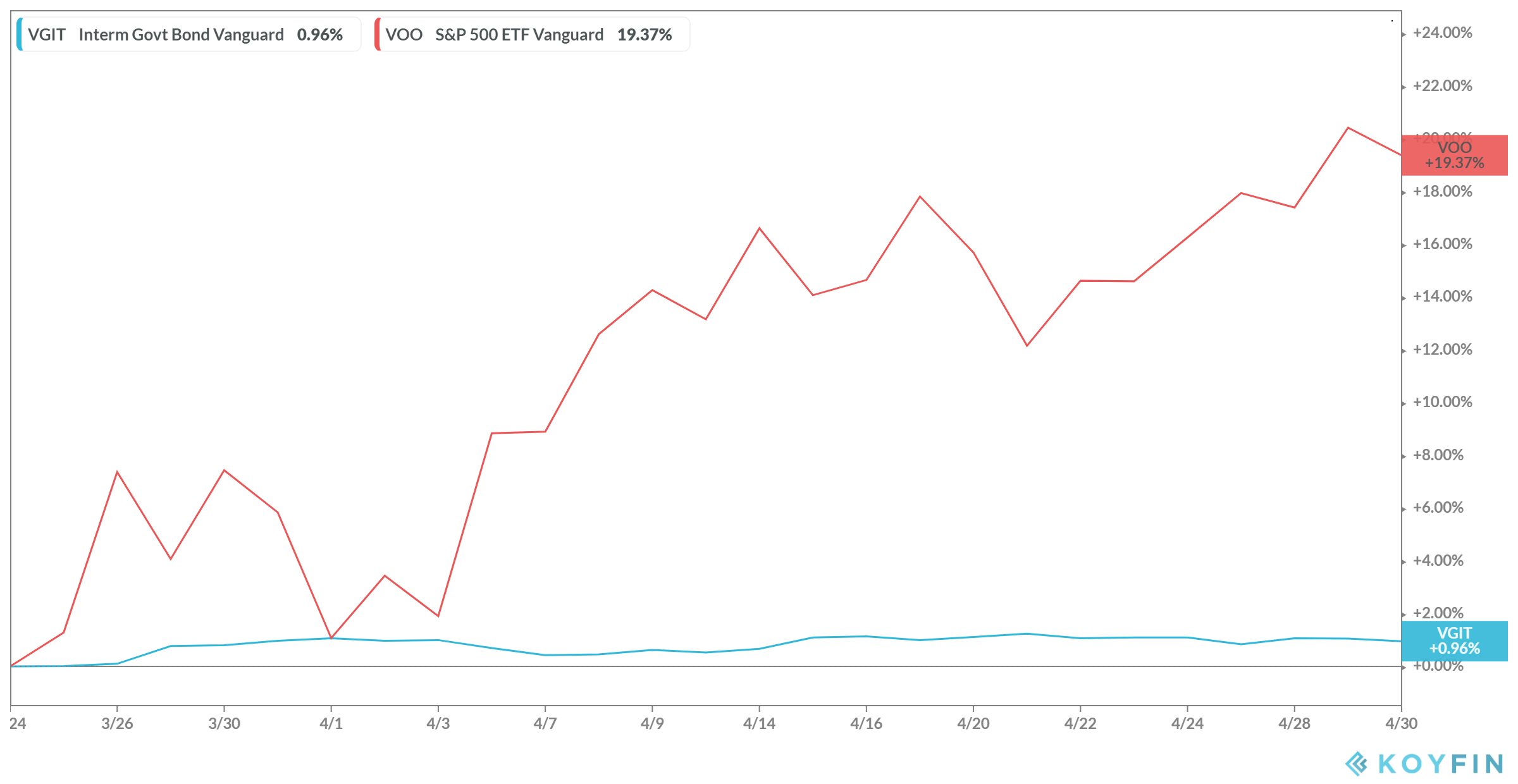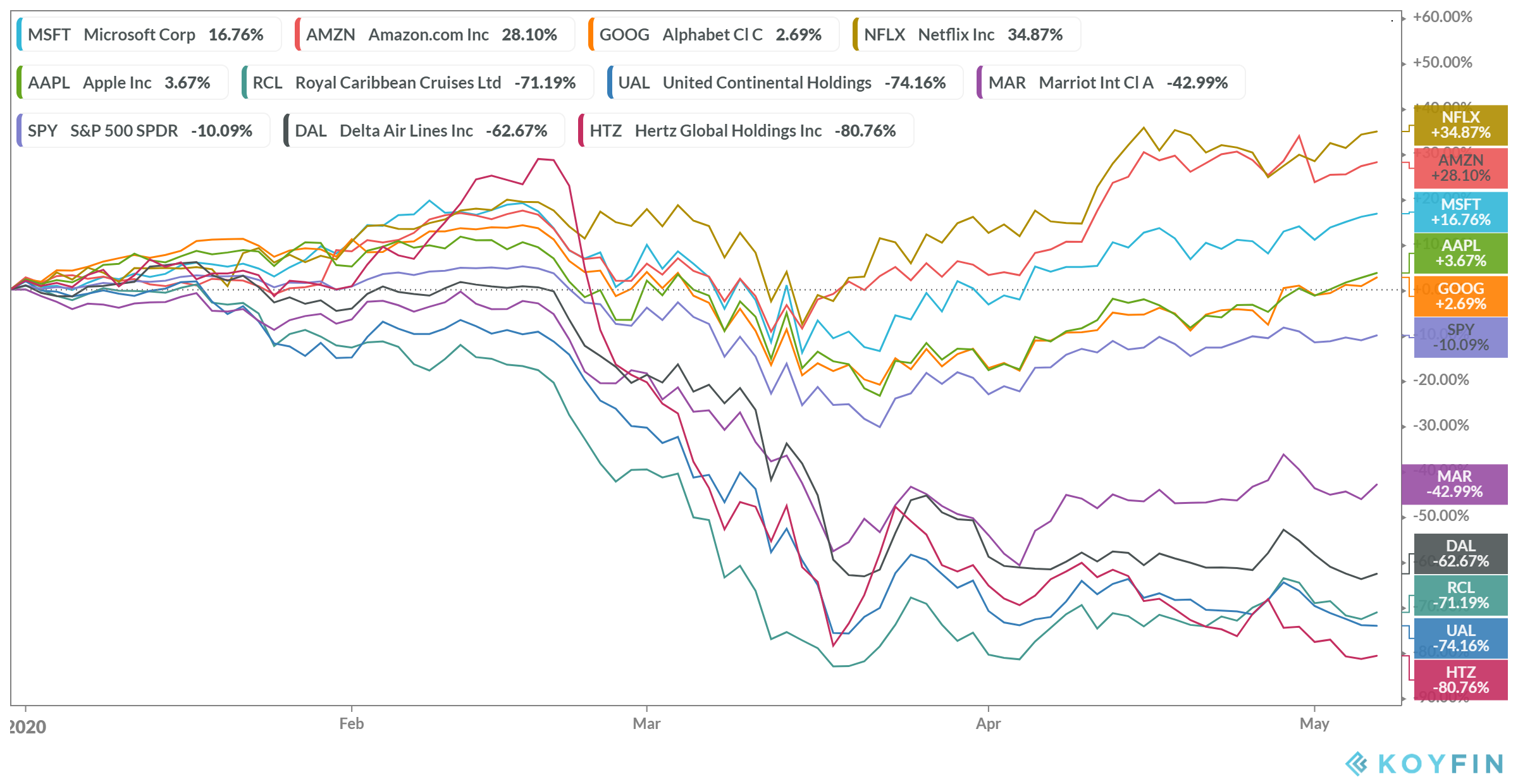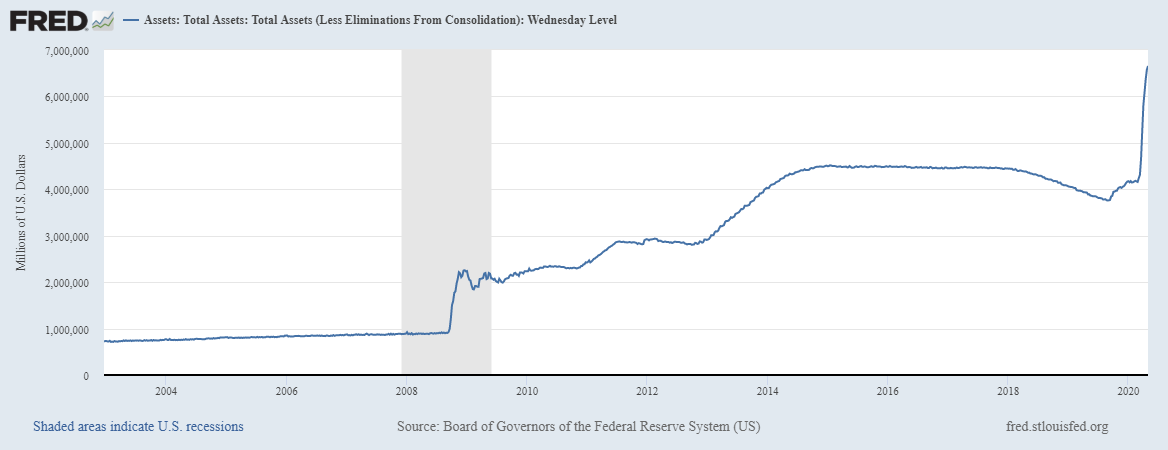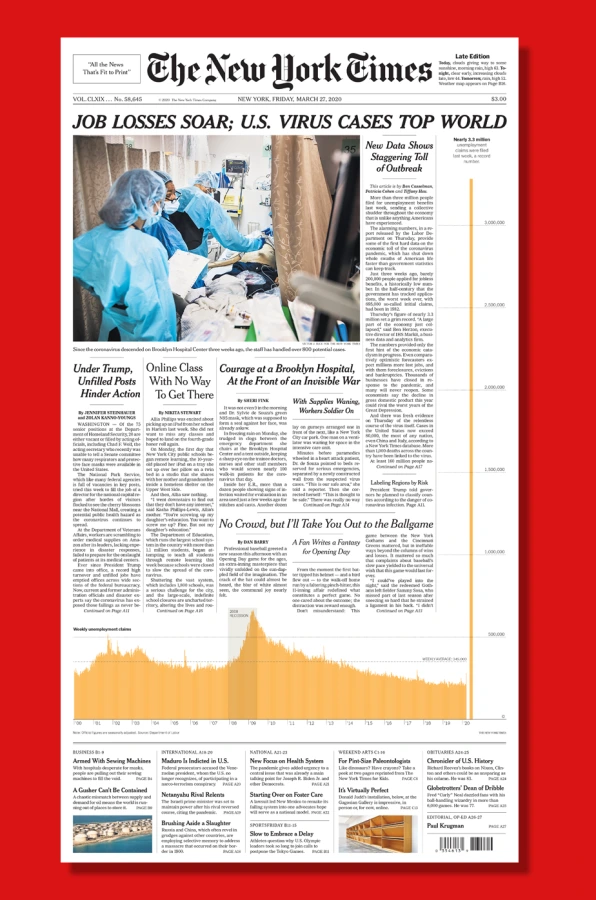Pandemic Market Lessons, In Pictures
While the country is starting to open back up on a limited basis, we have a long way to go before we can put the COVID-19 pandemic behind us. The complete shutdown of the global economy is just now starting to show up in the economic data. Nobody knows what a recovery will look like, how long it will take, or what life after the pandemic will look like. Eventually we will get back to some semblance of normal, but there will certainly be additional challenges before we get there. The last few months have been so full of unusual events in the investment markets, let's reflect on what we've learned, with the help of some graphics.
US Government bonds are still a safe haven in crisis
You don't own bonds just for their yield, particularly when that yield is so low. You own them to provide diversification for your portfolio and to help you get through volatile stock markets. This year provided a perfect example of why you should own bonds, particularly US government bonds:
From January 1st through March 23rd, the S&P 500 was down over 31% while an intermediate US treasury bond fund was up almost 7%. Regardless of where you think interest rates will go from here, the benefits of owning government bonds in your portfolio are clear.
It is still impossible to time the markets
Look at the above chart again and ask yourself, on March 23rd, what did you think the stock market would do over the next month? At that point we were about a week into the lock down in most states. The numbers were getting scarier by the day. Yet, here's what happened from there through the end of April:
The same S&P 500 index fund that was down 31% through March 23rd went on to gain 19% through the end of April. The next time you think about trying to buy or sell stocks based on where you think the markets are headed, just look at the above two charts.
The markets can do well even when a large number of stocks don't.
A lot of people, including myself, are surprised the overall stock market has rebounded from the lows so quickly. The S&P 500 is only down about 10% year to date through May 7th. It took a wild ride to get here, as you can see above, but the recovery so far has been impressive. However, this doesn't mean all stocks have rebounded. Here are some year-to-date performance figures for a few individual stocks, with the S&P 500 the middle purple line:
Some of the biggest names in the index have done incredibly well through the crisis, like Netflix, Amazon and Microsoft, who are all up double digits on the year. Meanwhile others, particularly companies in the hospitality and travel industries like Royal Caribbean, Delta, Hertz and Marriott, are down 40-80% on the year. Investors often worry about the concentration in some of the big tech stocks in the indices, but in this case that concentration has certainly helped performance.
Oil prices CAN go negative
There are a lot of reasons not to invest in oil futures, which Josh Brown explains here. Not too many people considered oil prices going negative as one of those reasons, but that is what happened in April:
How could this happen? In short, a price war broke out between Saudi Arabia and Russia driving oil supply higher at the same time global demand for oil plummeted due to the pandemic. For a better explanation I'd recommend reading this excellent article from Matt Levine at Bloomberg and this inside look at what actually happened the day oil prices went negative.
The government can spend what it needs to when it wants to.
When businesses are forced to shut down during a pandemic, the government has no choice but to do everything they can to get us through that shutdown. They have done exactly that over the last couple months with increased unemployment benefits, stimulus checks, PPP loans, corporate bailouts, bond market purchases, etc. The end result is a Fed balance sheet that appears to be growing exponentially:
When the government goes on a spending spree, inflation fears come back to life, and everyone wants to buy gold
Every time we get a massive increase in government spending, we see a corresponding rise in inflation fears. We saw it after 2008, but we never saw inflation pickup. We are starting to hear it again now, and it remains to be seen whether it will come true this time. Whenever there are inflation fears, demand for gold spikes. The price of gold is up 13% this year and even my 7 year old has caught gold fever:
Yes, that's him panning for gold in our backyard. No, we didn't find anything, but as he says "you never know!" I'm generally not a big fan of investing in gold, though it can provide some diversification benefits. This article more clearly articulates why I don't think gold is a great investment. Feel free to go digging in your backyard for gold, but don't expect it to protect your portfolio.
Expect the unexpected
Was a global pandemic completely unexpected? In January we weren't expecting one, and we certainly weren't preparing for one, but many people have been warning of this exact type of event for years. Despite the warnings, very few of us had any idea what a pandemic might look like in real life. This NY Times cover from March 27th showing the rise in unemployment claims is a powerful visual representation of just how unprecedented the past few months have been:
This won't be the last time we'll see something unexpected, so prepare to be surprised. Here's hoping the next surprise is something more positive, like a quicker than expected vaccine or drug treatment.
-Chris Benson, CPA, PFS
The views expressed represent the opinions of L.K. Benson & Company and are subject to change. These views are not intended as a forecast, a guarantee of future results, investment recommendation, or an offer to buy or sell any securities. The information provided is of a general nature and should not be construed as investment advice or to provide any investment, tax, financial or legal advice or service to any person.
Please see Additional Disclosures more information.







